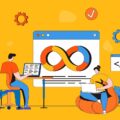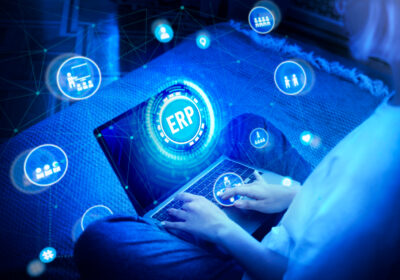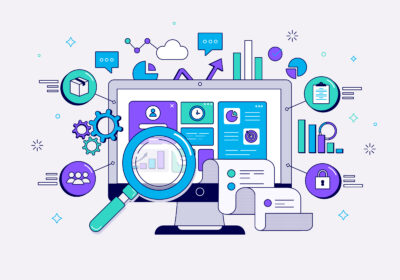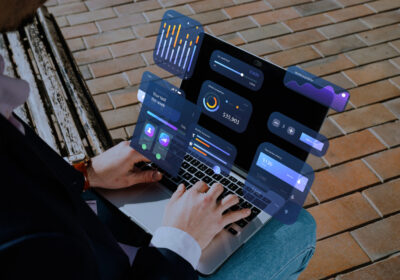In the digital age, software companies in UAE are making significant strides in developing technologies that are inclusive and accessible to all. One such area of focus is creating an Accessible ERP (Enterprise Resource Planning) environment for users with disabilities. This is not just a matter of corporate social responsibility, but also a way to tap into a wider talent pool and customer base.
The concept of accessibility has been gaining traction in the world of technology, and for good reason. With an estimated one billion people worldwide living with some form of disability, it’s clear that this is a demographic that cannot be ignored. In the context of ERP systems, accessibility refers to the design of software applications that can be used by people with disabilities as effectively as those without. This includes people with visual impairments, hearing impairments, cognitive disabilities, and motor impairments.
In the UAE, there is a growing recognition of the importance of accessibility. The government has launched several initiatives aimed at promoting digital inclusion, and businesses are following suit. Software companies in Dubai and across the UAE are investing in the development of accessible ERP systems, recognizing the value they bring not just to users with disabilities, but to all users.
The Importance of Accessibility in ERP Systems
Accessibility in ERP systems is crucial for software companies in Dubai and across the UAE. It ensures that individuals with disabilities can use the system just as efficiently as those without. This includes people with visual impairments, hearing impairments, cognitive disabilities, and motor impairments. By designing ERP systems with accessibility in mind, we can create a more inclusive digital environment.
ERP systems are complex software applications that are used to manage business operations, from finance and accounting to supply chain management and human resources. They are used by a wide range of users, from executives and managers to frontline employees. Given this wide user base, it’s crucial that these systems are accessible to all.
For users with disabilities, an inaccessible ERP system can be a major barrier to performing their job effectively. For example, a visually impaired user might struggle to navigate a system that relies heavily on visual cues. Similarly, a user with a motor impairment might find it difficult to use a system that requires precise mouse movements.
By contrast, an accessible ERP system can empower users with disabilities, enabling them to perform their job duties effectively and independently. This not only benefits the individual user, but also the organisation as a whole. An accessible ERP system can lead to increased productivity, improved employee morale, and a more diverse and inclusive workplace.
How to Build an Accessible ERP Environment
Building an accessible ERP environment involves several key steps. First, it’s important to understand the specific needs and challenges of users with disabilities. This can be achieved through user research and testing. Next, these insights should be incorporated into the design and development process. This might involve using larger text sizes for visually impaired users, or ensuring that all functions can be accessed using a keyboard for those with motor impairments.
Understanding the needs of users with disabilities is the first step in building an accessible ERP environment. This involves conducting user research to gain insights into their specific challenges and requirements. This could involve interviews, surveys, or usability testing with users with disabilities. The goal is to understand their experiences, identify any barriers they face in using ERP systems, and gather their ideas for improvements.
Once these insights have been gathered, they should be incorporated into the design and development process. This involves working closely with designers and developers to ensure that accessibility is considered at every stage of the process. For example, designers might need to consider how colour contrast can be adjusted to accommodate users with colour blindness, or how information can be presented in a way that is easy to understand for users with cognitive disabilities.
Developers, on the other hand, might need to ensure that all functions can be accessed using a keyboard, or that text-to-speech technology can be integrated into the system for users with visual impairments. They might also need to consider how the system can be made compatible with assistive technologies, such as screen readers or voice recognition software.
Accessibility Features to Include in ERP Systems
There are several accessibility features that can be included in ERP systems to make them more user-friendly for people with disabilities. These include text-to-speech functionality for visually impaired users, the ability to adjust colour contrast for those with colour blindness, and the option to navigate the system using a keyboard or voice commands. Additionally, providing clear and simple instructions can make the system easier to use for individuals with cognitive disabilities.
Text-to-speech functionality is a key feature for visually impaired users. This technology converts on-screen text into spoken words, allowing users to listen to the content instead of reading it. This can be particularly useful in an ERP system, where users often need to process large amounts of information.
The ability to adjust colour contrast is another important feature. This can make it easier for users with colour blindness to distinguish between different elements on the screen. In an ERP system, this could mean the difference between being able to quickly identify important information and struggling to understand the interface.
Keyboard navigation is a crucial feature for users with motor impairments. This allows users to navigate the system using the keyboard instead of the mouse. This can be particularly useful in an ERP system, where users often need to move between different sections and fields.
Finally, clear and simple instructions can make the system easier to use for individuals with cognitive disabilities. This can help users understand how to use the system and what each function does.
The Role of Software Companies in UAE in Promoting Accessibility
Software companies in the UAE have a significant role to play in promoting accessibility. By prioritising accessibility in their ERP systems, they can set a positive example for other businesses in the region. Moreover, they can contribute to a more inclusive society where individuals with disabilities have equal access to digital resources.
In the UAE, there is a growing recognition of the importance of digital accessibility. The government has launched several initiatives aimed at promoting digital inclusion, and businesses are following suit. Software companies in Dubai and across the UAE are investing in the development of accessible ERP systems, recognizing the value they bring not just to users with disabilities, but to all users.
By prioritising accessibility in their ERP systems, software companies in the UAE can set a positive example for other businesses in the region. They can demonstrate that accessibility is not just a matter of compliance, but a business imperative that can lead to increased productivity, improved customer satisfaction, and a more diverse and inclusive workforce.
Moreover, by promoting accessibility, software companies in the UAE can contribute to a more inclusive society. They can help ensure that individuals with disabilities have equal access to digital resources, and can participate fully in the digital economy.
Conclusion
In conclusion, building an accessible ERP environment is a worthwhile endeavour for any software company in UAE. Not only does it make the system more inclusive for users with disabilities, but it can also lead to a more diverse and innovative workforce. As a leading software company, Verbat is committed to promoting accessibility in all its products and services. To learn more about our efforts in this area, please get in touch with us.





